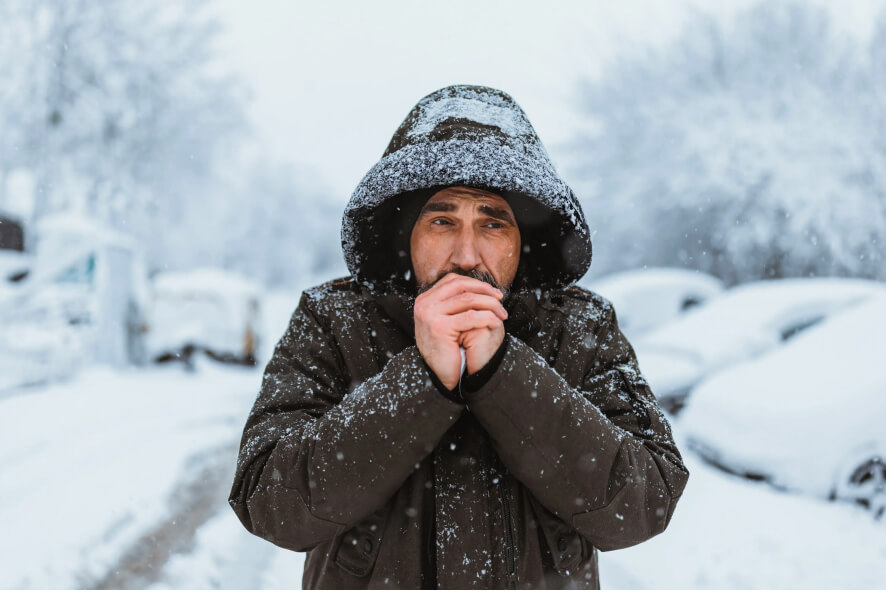As the temperatures drop and winter sets in, many people notice an increase in aches and pains. These cold-weather woes can affect anyone, but they are particularly troublesome for individuals with chronic conditions like arthritis or past injuries. Understanding the reasons behind these aches and pains and how physiotherapy can offer relief is crucial for maintaining health and well-being during the colder months.
Why Cold Weather Hurts?
- Muscle Stiffness: When the body is exposed to cold, muscles tend to contract and tighten up to preserve heat. This can lead to stiffness and reduced flexibility, making movements more difficult and painful.
- Joint Pain: Cold weather can exacerbate joint pain, particularly in those with arthritis. The drop in temperature can cause the tissues around the joints to expand, leading to increased pressure and discomfort.
- Reduced Circulation: Cold temperatures can cause blood vessels to constrict, reducing blood flow to muscles and joints. This can lead to an increase in pain and a longer recovery time for injuries.
The Role of Physiotherapy
Physiotherapy offers a multifaceted approach to managing and alleviating cold-weather-induced
aches and pains. Here’s how it can help:
- Warm-Up Techniques: Physiotherapists can teach proper warm-up exercises to prepare the body for cold weather. These exercises help increase blood flow to the muscles and joints, reducing stiffness and pain.
- Strengthening and Flexibility Exercises: A tailored exercise program can improve muscle strength and joint flexibility, making the body more resilient to the effects of cold weather. Strengthening muscles around joints can also reduce the burden on the joints themselves, alleviating pain.
- Manual Therapy: Hands-on techniques such as massage, mobilisation, and manipulation can help relieve muscle tension, improve circulation, and enhance joint mobility.
- Heat Therapy: Applying heat to affected areas can help soothe pain and reduce stiffness. Physiotherapists can recommend the appropriate use of heat packs or warm baths to provide relief.
- Education and Lifestyle Modifications: Physiotherapists can provide valuable advice on how to manage cold-weather aches and pains. This might include tips on dressing warmly, staying active, and making ergonomic adjustments at home and work.
- Pain Management Techniques: Physiotherapists can offer various pain management strategies, including electrotherapy (such as TENS), dry needling and guided relaxation techniques to help manage pain effectively.
Practical Tips for Cold Weather Comfort
To complement physiotherapy, here are some practical tips to help manage aches and pains during the cold months:
- Stay Warm: Dress in layers and keep your extremities covered. Use heating pads or electric blankets to maintain warmth.
- Stay Active: Regular exercise helps keep muscles and joints flexible. Choose indoor activities like yoga or swimming to stay active without exposure to the cold.
- Stay Hydrated: Dehydration can worsen muscle cramps and stiffness. Drink plenty of fluids, even if you don’t feel as thirsty in cold weather.
- Healthy Diet: A balanced diet rich in anti-inflammatory foods can help reduce pain and inflammation.
Conclusion:
Cold weather doesn’t have to mean enduring increased pain and discomfort. By understanding the reasons behind cold-weather aches and incorporating physiotherapy into your routine, you can stay active, reduce pain, and enjoy a healthier winter season. Physiotherapy not only provides immediate relief but also empowers you with the tools and knowledge to manage your symptoms effectively, ensuring that the cold months are no longer a period of dread but a time of comfort and well-being. If you are local to Kilsyth, Mooroolbark, Croydon, Ringwood, Montrose feel free to contact the team at Physio Elements for help with the aches and pains in the cold!

